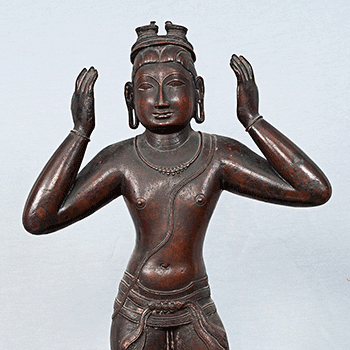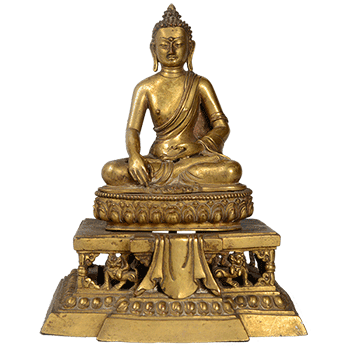This unique sculpture of Bharata belongs to the medieval era and originated in Southern India under the patronage of the Vijayanagara empire and dates back to 14th century. It is 75.5cm in height, 31 cm in width and 22.3cm in depth. It is currently on display in the Gallery of Bronzes at the National Museum, New Delhi.



























